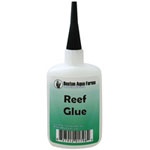As part of my Aquarist training while working for a public aquarium, I would have all of my feeding duties closely observed by the aquariums curator. To make a long story short, this was much more like military boot camp than I care to remember, ever see the movie Full Metal Jacket? One of phrases that were repeatedly drilled into my head was “feed the fish, not the aquarium”; I still hear the voice in my head today every time I feed my fish.
What I learned then, and teach now, is how important observation is when feeding the animals in your aquariums. Overfeeding, underfeeding and inappropriate foods are the common mistakes made by hobbyists when feeding the animals in their aquariums, or adding a new type of fish to their tanks.
Overfeeding is the most common mistake made by aquarium hobbyists when feeding their fish. Leaving uneaten food in the aquarium for your fish to eat later is never a good idea, especially when feeding pellet foods, flake foods, and frozen or fresh foods you should only feed enough so that all the food is eaten within a few minutes. Some fish will require to be fed multiple times per day, but only as much as can be eaten each time. Uneaten foods quickly start to decay in tropical aquariums, which will result in unnecessary demands on your filtration, resulting in poor water quality.
Underfeeding and inappropriate feeding will require much more observation from the person(s) who take care of an aquarium. The results of underfeeding will show in long term loss of body weight, or behavioral problems such as loss of energy, or erratic swimming patterns.
When I say inappropriate feeding I am talking about a couple different things. First of all I am talking about reproducing a natural diet for the animals that are in your aquarium. Most animals in your aquarium can be classified as either Predators (meat eaters), Herbivores (plant eaters), and Omnivores (meat and plant eaters). You should always research and ask questions about the animals that you intend to keep as pets, you should know what the natural diet of your animals, and provide the correct food for them. The second thing that I mean by appropriate food for your aquarium animal is knowing how the animal eats. Fish in particular, have specialized mouth parts for feeding a certain way. Surface feeders have upturned mouths and prefer floating foods. Bottom feeders have downward turned mouths and prefer sinking foods. Others will have centrally located mouths and prefer suspended or slowly sinking foods. And some predators require hard foods to keep their teeth healthy. Food size is also important, too small of a food size may be difficult for some fish to capture. Food that is too large may be very difficult to swallow, and can even injure internal organs. So it important to observe your fishes eating so that you can be sure you are providing both the correct type and form of food to insure good health.
So remember, feed your fish, not your aquarium
Dave
 That Fish Blog – Aquarium Advice and Information
That Fish Blog – Aquarium Advice and Information




Thanks for the great Article Dave!!!
J.Budde
How about hermit crabs? Shouldn’t you leave enough uneaten foods for them?
Aida,
Thank you for your comment, that is an excellent point. True, hermit crabs are scavengers and need a sufficient amount of food to survive. My point is that you still want to make sure that as much of the food as posible is eaten. What you should try to avoid is uneated food that is allowed to decompose in the aquarium.
Dave
This is my first time to have an aquarium and this article helped me. Thanks a lot.